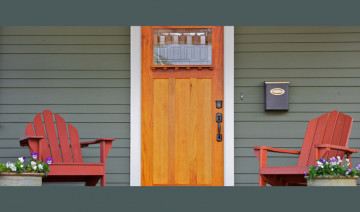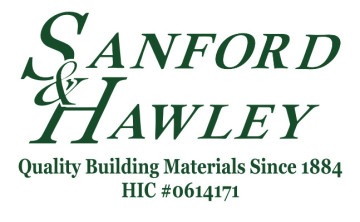
Doors (Exterior-Entry) Buying Guide
Getting Started
The front door is the “welcome” factor of the home and provides curb appeal. But it also must function for security and for keeping out weather’s elements. Entry doors are constructed from a variety of materials, and are created in a vast range of designs. Standard design for an entry doors is a six panel, stile (vertical component) and rail (horizontal component) construction. Many different configurations can be ordered to create an individualized ambiance. To enhance the look of the front door, homeowners may consider a variety of features.
Materials
Steel doors account for about 50 percent of the market. With foam core insulation they are energy efficient. Manufactured with a smooth or woodgrain surface, steel doors are delivered primed, or with a finish paint or stain. Steel doors resist shrinking, swelling and warping, but will scratch and rust if not quickly finished after being damaged.
Fiberglass doors also are energy-efficient with a foam core and are manufactured with a smooth but most frequently a woodgrain finish. More expensive than steel, fiberglass doors are less expensive than wood and are low maintenance when compared to wood. Finished in a variety of textures, fiberglass doors may be painted or stained to mimic solid wood. Fiberglass may crack under extreme pressure.
Solid Wood doors provide an expensive and substantial look to a home. Constructed from a variety of hardwoods — mahogany to oak— wood doors are 1-3/4” thick offering energy efficiency and security to the building. More expensive than other materials, wood doors must be maintained to eliminate warping, swelling and shrinking. A traditional choice for older and historic homes, wood doors can be stained or painted, and even hand-carved to variety of designs.
Features to Consider
Glass Inserts for front doors are offered in many colors, patterns and textures. An insert will increase the cost of the door, and can have an impact on the energy efficiency of the door. Designs of glass inserts provide an individualized feature to the entry door and are offered by most door manufacturers.
Sidelites and transoms can be factored into the opening of the front door, adding curb appeal and increased sunlight. Sidelites may be created on each side of the door or just one side. Transoms are inserted over the entry door.
Iron grills are being used as ornamental and security features on front doors. The grills over the lites in the door panel, project a heavy, safe, and decorative aspect to the entry.
Entry doors can swing in, or out, which depends upon the hinge location. Consider the structure’s front entry when deciding which is appropriate.
Price Considerations
Wood doors, especially exotic woods, are the most expensive. Add glass inserts and sidelites, grills, and carved panels and these can cost into the thousands of dollars, depending upon the height and width. Also, the maintenance of wood doors should be factored into the lifetime cost of the door.
Fiberglass doors are less expensive, but add glass inserts, sidelites, grills, and the price can escalate. Maintenance should be minimal on fiberglass.
Steel doors are the least expensive, but may need maintenance if the door receives hits or scratches, such as front doors on porches. Again, factor in glass inserts, etc. Steel may be low cost, but it does not offer the look of fiberglass and wood.
*Original article source from https://sanfordandhawley.myesh...*
